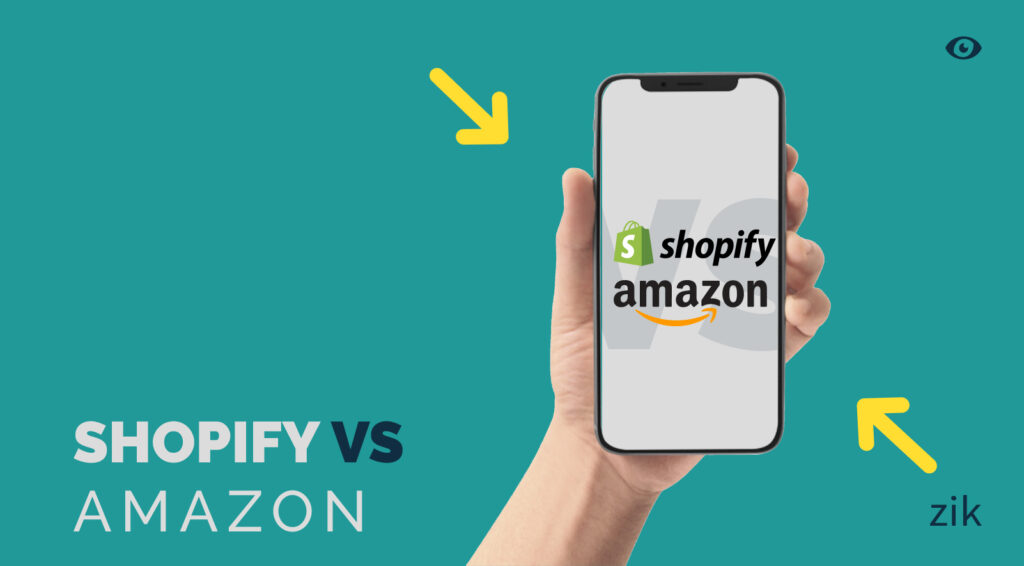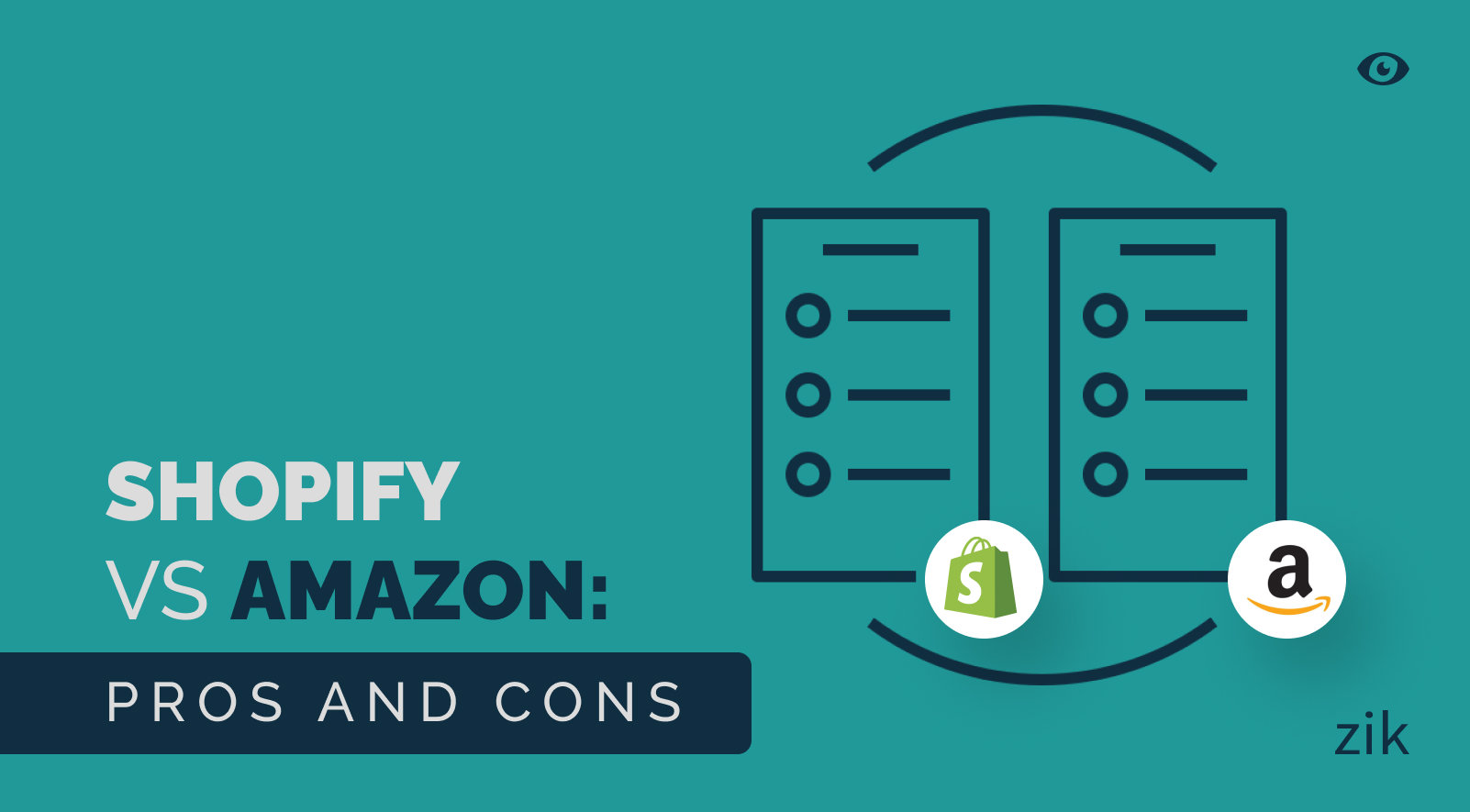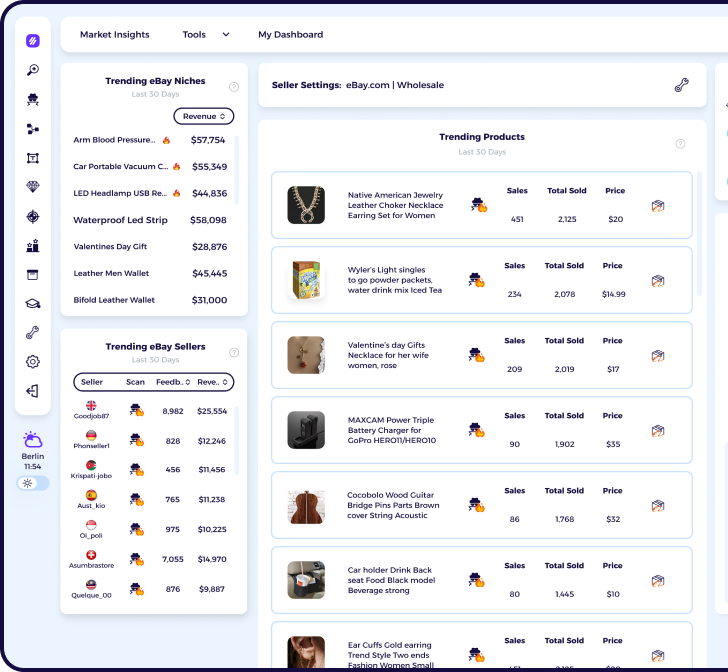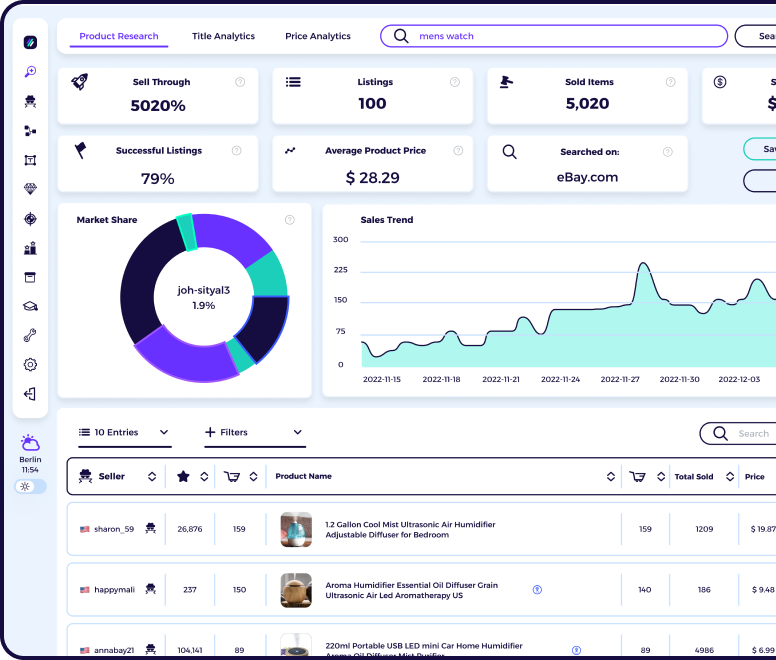Undoubtedly, online shopping is gaining more popularity and businesses are trooping into the online space to meet the available needs.
In 2023, statistics estimated that 218.8 million consumers will shop online showing that the growth is never going to stop anytime soon!
Starting an online eCommerce business can be profitable as 20.8% retail sales is expected to take place in 2023. However, it can also be challenging with over 26 million platforms to choose from, which also expands daily.
Shopify and Amazon are two popular and feature-rich eCommerce platforms millions of online shoppers visit every day, also providing the best marketplaces for your online business to thrive. However, which is the right platform for your business needs?
Let’s begin with an overview of the two platform options.
Shopify vs Amazon
Article Overview
What Is Shopify
How to get started on Shopify?
What Is Amazon?
How to get started on Amazon?
Shopify vs Amazon: Pros and Cons
Shopify
Amazon
Shopify vs Amazon: Similarities
Shopify vs Amazon: Differences
Conclusion
What Is Shopify
Just like every other eCommerce platform, Shopify lets you build an online store, grow, and manage your business as you make your profits. The platform is one of the most popular eCommerce website builders since its inception in 2006. It has also become one of the most popular e-commerce platforms, powering over 4.4 million websites in 175 global countries.
The platform is user-friendly and offers an easy way to accept payments online and sell products including on third-party marketplaces or social media platforms. You can as well unify all your commerce onto a single platform.
What’s more?
Shopify also offers sellers operating brick-and-mortar stores the Shopify Point-Of-Sale or POS app to expand their business online, join pop-ups, allow online sales with in-store pickup, improve their overall customer experience, and keep track of all their data.
From a free trial plan and other pricing plans to varieties of features and integration available on the marketplace, Shopify is a good choice for businesses that want an all-in-one e-commerce solution.
How to get started on Shopify?
Whether you are a small independent retailer, a dropshipper, or a large multinational company that wants to sell online, here’s how to create a Shopify store, regardless of your technical expertise.
- Go to www.shopify.com and click Start Free trial to begin.
- Add your details, email, password, and primary domain name to create your store
- Then, add other necessary information, address, location, city, region, contact details, and others.
- Now it’s time to set up your store. Check out all tools and features available like orders, products, customers, finances, analytics, marketing, and discount. Also check out selling plans like the basic Shopify plan or advanced Shopify, depending on your budget.
- Choose a customizable theme. Shopify has a default theme for new users that you can easily change under the online Stores section. Explore the free and paid themes to choose what’s best for your business.
- Add your products with additional details like your title, description, product type, price, and images.
- Set up your store payment provider. Shopify accepts a wide range of payment options using Shopify Payments which is Shopify’s own payment gateway, as well as third-party providers like PayPal, Stripe, Apple Pay, Google Pay, Shop Pay, and Amazon Pay.
- Set up your shipping rates, policies, and about sections.
What Is Amazon?
Amazon has evolved into a global one-stop shop for all buying needs since 1994, and its market cap is currently estimated at $1063.28B, emerging as the largest e-commerce of all!
According to a recent survey, over 60% of U.S online shoppers start their search on Amazon, making it the go-to platform for consumers looking for a wide range of products.
In addition, Amazon is an online marketplace that prioritizes the needs of its customers and has integrated several business units into its operating system, including a one-sided platform, a two-sided marketplace, web services, the Kindle Store, an app store, Prime Video, a gaming studio, and even retail stores called Amazon Go.
The platform is easy to browse, use, and provides sellers with a large user base to sell their products and build a profitable brand.
How to get started on Amazon?
Selling on Amazon is not as hard as it may seem. To begin, here’s a step-by-step ide on how you can create your own online store and sell on Amazon;
- Create an Amazon seller account. Visit www.sellercentral.amazon.com and Sign up as a seller.
- Choose your selling plan. Amazon offers individual and professional selling plans.
The individual plan is best for small-scale sellers that sell less than 40 units of products monthly. It requires no monthly subscription fee but a $0.99 fee for each sales transaction.
On the other hand, the professional plan is for large-scale sellers that sell over 40 units of products monthly. Amazon charges a monthly fee of $39.99 to use this plan, but it gives you access to sell in additional product categories, features,o, and tools.
While the professional plan is mostly used, the selling plans have their respective benefits, and it largely depends on your specific needs and business goals
- Enroll in the Amazon Brand Registry program. The Amazon brand registry helps you gain over your brand and products on Amazon. It also includes access to the store builder and advanced management tools to enhance and protect your brand.
- Customize your online store. Here’s where you get to choose a store name that reflects your brand, add your unique logo, choose a theme for your brand, and design the layout, colors, and fonts to create the perfect look for your store.
- List your products. Make use of high-quality images, catchy titles, detailed descriptions, and pricing information, and you can decide to select feature products or use dynamic widgets and product displays to attract interested customers to your storefront.
- Then, optimize your product listings with Amazon’s A+ Content tool. This tool offers advanced features to help your product stand out against the platform’s fierce competition and earn customers’ trust to purchase from you.
- Grow your store. Now is the time to launch! You can decide to promote your store using paid advertisements to drive more traffic to your store and also leverage e-commerce automation, Amazon Live, and seller apps to manage and keep track of your business.
Shopify vs Amazon: Pros and Cons
Shopify
Pros
Shopify is easy to use: Regardless of your technical knowledge, you can set up a specialized eCommerce platform, integrate multiple sales channels, and manage your store processing with its user-friendly interface and easy-to-use features.
Access to built-in email marketing feature: You can send a personalized message to your customers, and strategically market new products to them.
Supports offline sellers: Shopify allows brick-and-mortar sellers to create an online store to manage their products.
Shopify Integrations: As a seller, you can improve your online store features, functions, and checkout processes with Shopify app store and payment options.
24/7 customer support: You can contact Shopify support via live chat or email to report any technical issues and also get resources and tutorials from the help center.
Cons
Transaction fees: Shopify charges additional transaction and referral fees for each transaction and a monthly fee for Professional selling accounts.
Limited customization control: Shopify has different selling options and you don’t have control over certain aspects of your store such as the checkout process, server configuration, or third-party apps.
Traffic: Unlike Amazon, you’ll have to source for your customers outside the e-commerce platform through several marketing and advertising channels.
Amazon
Pros
Huge customer base: Amazon is the largest marketplace in the U.S with whooping 231 unique monthly visitors, allowing you to sell your products to a larger. You don’t to worry about email campaigns or search engine optimization, your target customers are right where you are.
Customer-centric platform
Amazon places a strong emphasis on providing positive customer experience, which helps you increase sales and build a reputable brand.
Fulfillment by Amazon (FBA): As an Amazon seller, the Amazon FBA offers a fulfillment function that only requires you to stock up your inventory while Amazon takes care of your orders including shipping and customer service. It helps to streamline your business operations and focus more on growth.
Reliable payment processing: Amazon has gained the trust of online shoppers to make safe transactions. The platform enables customers to use their debit cards and ensure satisfaction or refund. You’ll also be able to manage their payments and track sales data.
Cons
Fierce competition: Amazon is a crowded marketplace with millions of active sellers like you. While you can reduce your pricing to beat the market, you will be losing out on profits and sustaining your business
High fees and commissions: Your selling fees on Amazon mostly hinge on your plan, product category, and fulfillment option which can add up quickly.
Account suspension risk: As an Amazon seller, there are stringent guidelines and policies you must follow to keep your seller account from suspension. Also, to sell certain categories of products like fine art, music, and jewelry, you’ll require Amazon’s approval.
Amazon private label products: Amazon has their labeled products on the marketplace which are priced competitively and given preferential treatment in search results, making it hard to compete with them.
Shopify vs Amazon: Similarities
- Online storefront
Shopify and Amazon offer a platform where you can build your e-commerce business, sell your product to customers worldwide, and make maximum profits.
- Easy to use
Shopify requires no coding skills with its drag-and-drop interface. As well, you can seamlessly create your Amazon store with the resources available to guide you. Furthermore, both platforms offer available themes you can easily customize to reflect your brand image.
- Easy payment options
Both platforms offer payment processing services that make it easy for customers to pay for their purchases and for you to receive payments.
- Mobile apps for sellers
Both platforms provide mobile apps you can use to manage your store sales and inventory directly on your mobile device.
- Shipping and Fulfillment
Both platforms offer customers quality shipping and fulfillment services to help you manage your inventory and ship products to customers.
- Marketing and Advertising
Shopify and Amazon offer features and tools to promote your business and draw in more customers.
- Customer Support
Both platforms provide good customer support that answers your questions and responds to any issue regarding your store.
Shopify vs Amazon: Differences
- Selling Fees
Shopify charges a monthly subscription fee to use its platform, while Amazon charges a per item referral fee and other fees depending on the type of product being sold.
Shopify’s fees are generally lower than Amazon’s, but the exact costs will depend on the size of the business and the products being sold.
- User base
Shopify is helping over 1 million businesses in over 175 countries build their own brands and customer base, however, Amazon has a ready-made audience with great reputation and trust.
- Payment gateways
With Shopify, you can process payments through Shopify payments which enables credit card, Paypal, Apple Pay, Stripe, Meta Pay, Amazon Pay, Klarna which offers the buy now pay later services, Bitpay, and others.
However, Amazon accepts credit and debit cards, gift cards, business or personal checking accounts, Pay by Invoice, and Amazon Pay.
- Design and Control
Shopify gives you more customizable control over your online stores than Amazon to create a unique online presence
On Shopify, you can customize your store design and branding, set your own pricing, and manage your fulfillment and shipping. While on Amazon, you must adhere to Amazon’s rules and policies, and the platform manages many aspects of the customer experience, including shipping and returns.
- eCommerce tools
Amazon provides several marketing resources to help sellers in promoting their products. Amazon’s marketing tools are more extensive and include sponsored ads, brand analytics, Amazon FBA, display ads, and other options.
Shopify offers over 7000+ apps, a point-of-sale feature that manages your offline and online store sales, inventory, and processes on a single online platform. Shopify is focused more on connecting sales channels from your social media channels and other e-commerce and helping businesses build their own marketing campaigns.
Conclusion
Shopify and Amazon are two of the top leaders in the eCommerce world centered on helping small and big businesses alike to showcase their products and attract potential customers.
If you decide to choose a platform with a sizable customer base to establish your brand and escalate your business, Amazon will be the best option for you.
Perhaps your goal is to build an easy-to-use platform where you get to manage different sales channels in a place, market your store to drive in customers, and sell your products. Shopify will be the best option for your business. You just have to decide on your business goal and leverage the right platform to make more revenue.









